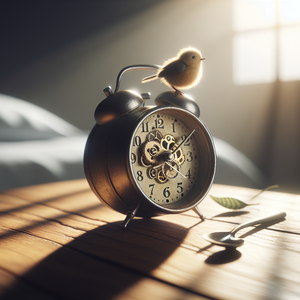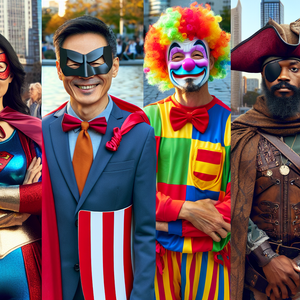The Fusion of Art and Engineering: A Creative Collaboration Redefining Boundaries

Mechanical engineering and art may seem like disparate fields, yet they share a profound connection rooted in creativity and problem-solving. At the core of both disciplines lies the desire to create—whether it's a functional piece of machinery or a visually captivating sculpture. Mechanical engineers possess an understanding of materials, mechanics, and dynamics, which can be harnessed to bring artistic visions to life. This interplay opens up a world of possibilities for dynamic installations that engage audiences in novel ways. For instance, both artists and engineers engage in iterative design processes. Artists sketch their ideas, while engineers create prototypes; both seek to refine their work until it meets their standards of beauty and function. This shared ethos of experimentation fosters collaboration, where engineers can offer insights on structural integrity while artists provide the vision that guides the engineering process.
Kinetic Sculptures: Movement Meets Design
One of the most striking examples of this fusion is the realm of kinetic sculptures. These artworks incorporate movement as a fundamental element, relying heavily on mechanical engineering principles. Artists such as Theo Jansen, known for his "Strandbeests," have collaborated with engineers to design intricate structures that not only capture the eye but also evoke a sense of wonder through their movement. Mechanical engineers contribute to the design of the mechanisms that allow these sculptures to move, ensuring they are both aesthetically pleasing and functionally sound. The process often involves trial and error, showcasing how engineers can apply their analytical skills to overcome challenges in achieving the artist’s vision. For example, engineers might create custom gears or utilize sensors to enhance the interactivity of a sculpture, allowing it to respond to environmental stimuli or viewer engagement. Each successful iteration serves as a testament to the power of collaboration, merging technical precision with artistic flair.
Immersive Installations: Engaging the Audience
Beyond kinetic sculptures, the collaboration between mechanical engineers and artists has given rise to immersive installations that transform spaces into interactive experiences. Projects like teamLab’s “Borderless” exhibit in Tokyo highlight how technology can redefine audience engagement. The installation uses sensors, projectors, and mechanical components to create an ever-changing digital landscape that responds to the movements of visitors. Mechanical engineers play a crucial role in these projects, ensuring the seamless integration of technology and art. They design the underlying systems that allow for real-time interaction, from motion tracking to the mechanical elements that bring the installation to life. This collaboration enhances the artistic experience and challenges engineers to think creatively about their designs, pushing the boundaries of traditional engineering roles. The result is a space where art is not just viewed but experienced, creating a dialogue between the piece and the audience.
Interactive Exhibits: Bridging Education and Entertainment
The fusion of art and engineering also finds a significant place in educational settings, where interactive exhibits can captivate and inform. Museums and science centers increasingly feature installations that blend artistic expression with engineering principles, creating an engaging learning environment for visitors of all ages. Mechanical engineers can contribute by designing hands-on exhibits that allow visitors to experiment with concepts like mechanics, motion, and energy. For example, an exhibit might include a giant pendulum that visitors can manipulate, demonstrating principles of physics while simultaneously serving as an artistic centerpiece. This approach not only makes learning enjoyable but also highlights the importance of engineering in everyday life. Through these collaborations, students and families leave with a deeper understanding of both subjects, fostering a generation that appreciates the interconnectedness of art and science.
The fusion of art and engineering represents a transformative approach that transcends traditional boundaries, offering both fields a rich terrain for exploration and innovation. As mechanical engineers collaborate with artists and designers, they not only expand their own horizons but also contribute to the creation of mesmerizing works that inspire and engage audiences. This interdisciplinary partnership encourages a new generation of engineers to embrace creativity, fostering an environment where technology and art coexist harmoniously. As we continue to explore this dynamic relationship, we can anticipate a future where the possibilities are limited only by imagination, showcasing the profound impact that collaboration can have on both our culture and our technological advancements. The journey of a mechanical engineer is no longer confined to the workshop or design lab; it is also a path that leads through galleries, museums, and installations that celebrate the beauty of invention and creativity. By embracing this fusion, we lay the groundwork for a more integrated and innovative world.
Kinetic Sculpture Engineer
Art installations, museums, design firms, and collaborative art projects
Core Responsibilities
Design and develop mechanisms that facilitate movement in kinetic sculptures, ensuring both functionality and aesthetic appeal.
Collaborate closely with artists to translate creative concepts into practical engineering solutions.
Conduct testing and iterative prototyping to refine movement mechanisms.
Required Skills
Proficiency in CAD software for 3D modeling and simulation.
Strong understanding of mechanical principles, materials science, and dynamics.
Experience with sensors and automation technology to enhance interactivity.
Interactive Exhibit Designer
Science centers, museums, educational institutions, and cultural organizations
Core Responsibilities
Create engaging and educational interactive exhibits that blend artistic elements with scientific principles.
Develop prototypes and oversee the implementation of interactive technologies such as motion sensors and projection systems.
Work with cross-disciplinary teams to ensure seamless integration of art and engineering components.
Required Skills
Background in mechanical engineering or industrial design, with a focus on user experience.
Familiarity with programming languages (e.g., Arduino, Python) for interactive installations.
Strong problem-solving skills and creativity in designing user-centric experiences.
Mechanical Engineer for Art Installations
Art galleries, public art projects, and interdisciplinary design studios
Core Responsibilities
Collaborate with artists to design mechanical systems that support large-scale art installations, ensuring structural integrity and functionality.
Perform engineering analysis and simulations to predict how installations will behave under various conditions.
Oversee installation processes and provide technical support during setup.
Required Skills
Expertise in structural analysis, material properties, and mechanical design.
Experience with project management and collaboration across disciplines.
Knowledge of art fabrication techniques and materials used in installations.
Creative Technologist
Creative agencies, tech startups in art and design, and cultural institutions
Core Responsibilities
Develop innovative technology-based solutions for artistic projects, including installations and interactive experiences.
Prototype and test new technologies that merge art and engineering, such as augmented reality and robotic elements.
Collaborate with artists to brainstorm and develop concepts that leverage technology creatively.
Required Skills
Strong programming skills in languages such as JavaScript, Python, or C++.
Experience with electronics, microcontrollers, and interactive design tools.
A keen understanding of both artistic vision and engineering constraints.
Exhibition Technology Specialist
Museums, exhibition design firms, and event production companies
Core Responsibilities
Design and maintain technological systems for exhibitions, ensuring they operate smoothly and enhance visitor engagement.
Collaborate with curators and artists to integrate technical elements into exhibitions seamlessly.
Troubleshoot and resolve technical issues during exhibitions, ensuring a high-quality experience for visitors.
Required Skills
Technical expertise in AV systems, projection mapping, and interactive media.
Familiarity with exhibit design processes and visitor experience strategies.
Strong communication skills to work with diverse teams, including artists and curators.


